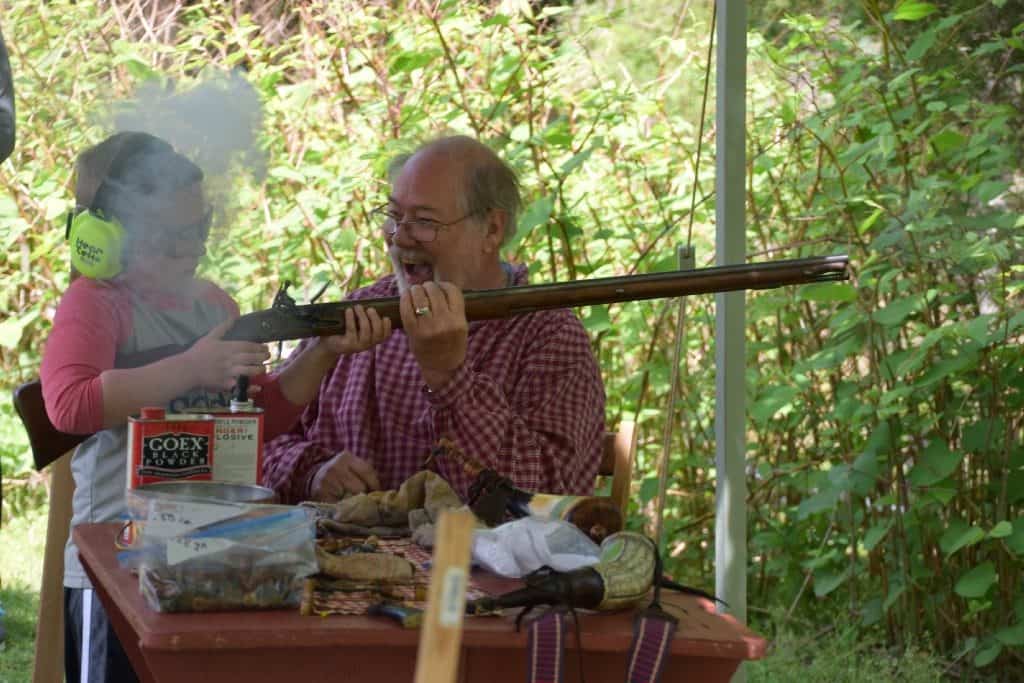
Arrows flew, rifles shot, cannons fired. Welcome to the 1700s in Gloucester Township.
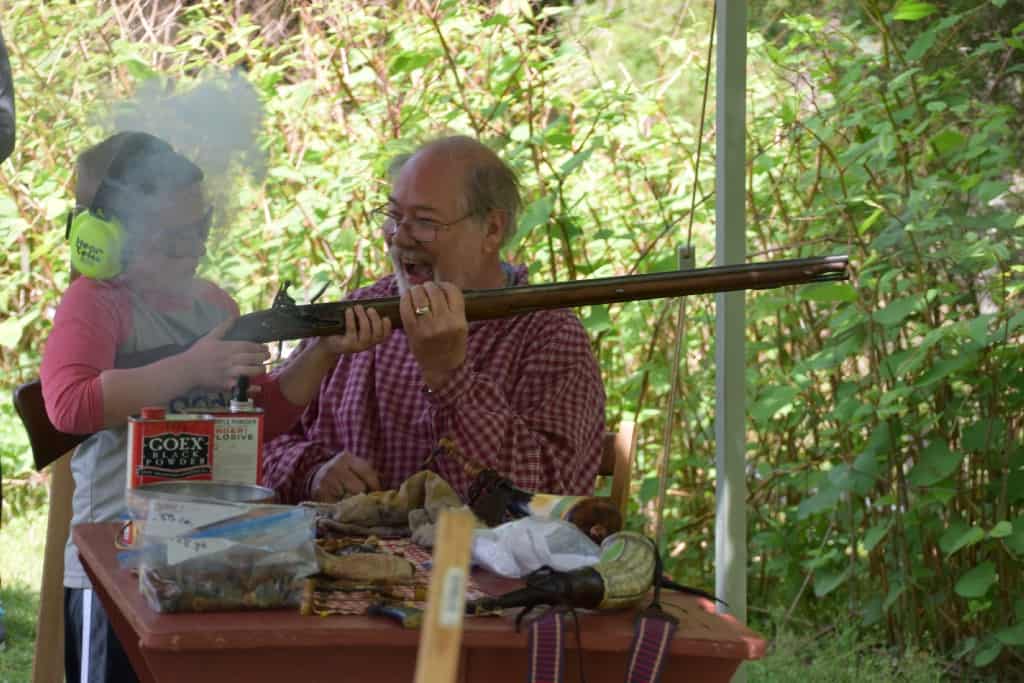
Every hour on the hour, an explosion rang through the clearing around the Gabreil Daveis Tavern as a cannon fired a 5-pound cannonball. The noise was complemented by the sharp cracks made as people shot flintlock rifles on the other side of the clearing.
Elsewhere in the clearing, people forged hooks with a blacksmith, and threw tomahawks and shot arrows at targets.
No, this was not a “Lord of the Rings” training ground. Gloucester Township celebrated its first colonial day reenactment April 22 and 23 at the tavern, immersing residents in the vast history of the tavern and the township.
The event drew a crowd of residents (and non-residents) eager to learn more about the township’s history.
“The event was all about letting people experience, enjoy and learn things we don’t do anymore,” said Sharon Mickle, who helped organize the event with the Gloucester Township Historic and Scenic Preservation Committee.
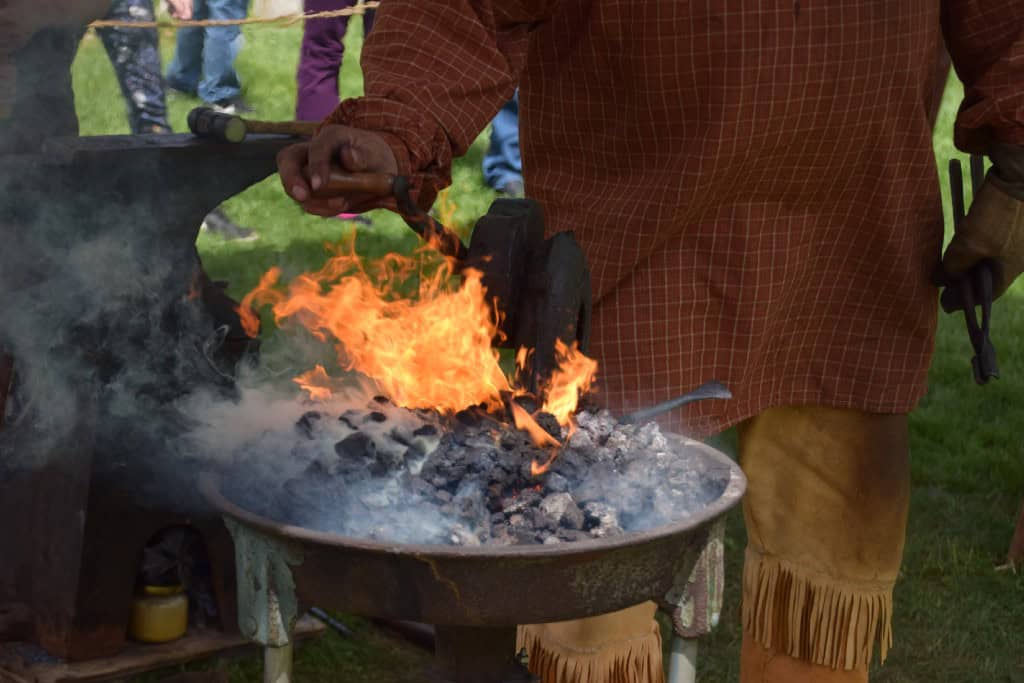
Attendees got an in-depth glance at the history of the township and the house. In addition to the aforementioned activities, visitors could also tour the home, enjoy food from campfire cookouts and much more.
Each room in the tavern holds a different story. The tavern was built in 1756 by Gabreil Daveis, Jr. to house boatmen who were traveling along Big Timber Creek and needed a place to rest for the night. Daveis, Jr. built the tavern to help make a living.
“Back then, there were not a lot of ways to make a living other than farming and blacksmithing,” Mickle said.
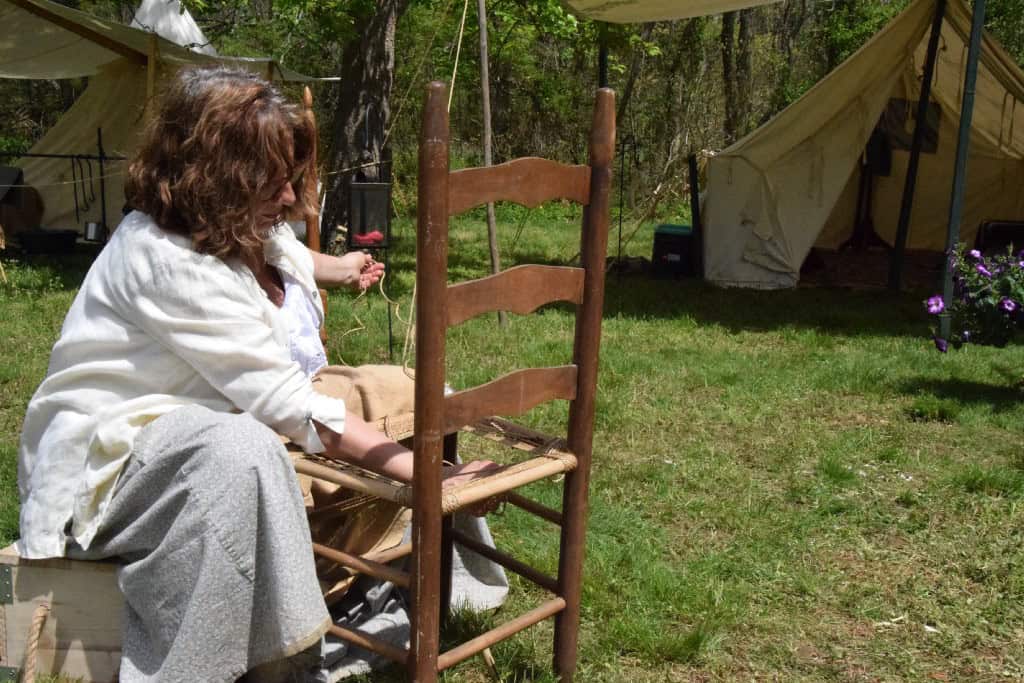
Big Timber Creek was often used as a method of transportation to deliver lumber to Philadelphia during this time period. Roads were often muddy and difficult to traverse.
Mickle said the proximity to the river is a large reason Gloucester Township is located where it is. Due to erosion, the river has gotten much wider and shallower over time, but used to be able to transport large boats and shipments.
The building also served as a home to four Revolutionary War soldiers. Daveis, Jr. was a militiaman who served in Capt. Jehu Wood’s Company, while his brother Richard served as a private under Col. Joseph Ellis.
The lengthy history of the house is obvious; the wide wooden planks of the floor creak as you walk on them, and it’s jam-packed with antique furniture and decorations. Many of the objects in the tavern have been there for more than a century.

The tavern is decorated with a lot of artwork from William F. Schuck, the building’s most recent owner. Schuck discovered the building while he was hiking in 1923, and purchased it and fixed it up from Joseph Jaggard in the 1930s. Jaggard was a member of the Warwick family, who owned the tavern for a century.
Schuck was an artist who created paintings and even repurposed a folding screen into a hanging tapestry on the wall.
“People learn about different parts of history, but don’t necessarily get to learn about their own little local history,” Mickle said. “We’re trying to reach people with a message about local history.”
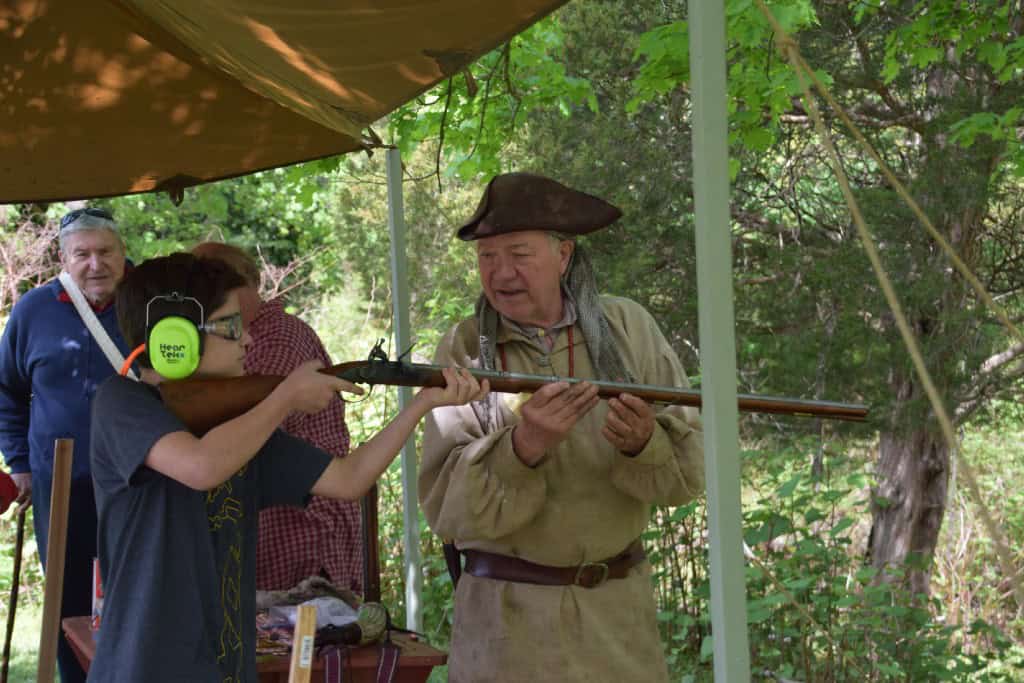
The building is located at Fourth Avenue and Floodgate Road. It is open for full tours two Sundays a month.
The Historic and Scenic Preservation Committee is planning more events at the tavern later this year, including Unfolding Treasures Found Archiving on June 4, Local History on the Lawn on Aug. 20, and Messengers of the Underground Railroad on Oct. 22.
For more information on the committee, visit its Facebook page by searching for Gloucester Township Historic and Scenic Preservation Committee.









